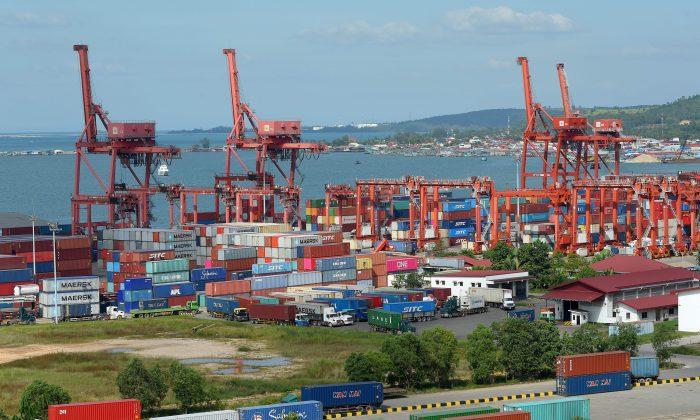The initiative seems to have fallen far short of its original goals as well as the fears it once widely engendered in the West.
From its beginning, China’s BRI (also known as “One Belt, One Road”) always had a Mafia-like feel to it. Beijing would approach needy countries in Asia, Africa, Latin America, the Middle East, and the periphery of Europe and offer loans for important infrastructure projects—ports, rail links, dams, roads, and the like. State-owned Chinese banks would arrange the financing, and Chinese contractors would execute the projects and, when complete, manage them.
If the host country failed to pay, the projects would come under Chinese ownership.
Now, the scheme has run into trouble.
The problem is that the projects were chosen for political and diplomatic, not economic, reasons. Many of these efforts were always dubious, and now, it’s clear that they can’t earn enough to support the loans.
In Sri Lanka, for example, even before the COVID-19 pandemic shut down trade, a BRI-built port lacked the traffic to meet the terms of the loan. That loan has gone bad, even if the Chinese state-owned banks involved aren’t yet ready to make such a declaration.

Even before this latest news of potential default, Chinese bankers had warned Beijing about the financial and economic viability of BRI arrangements. Some of these bankers were so concerned that they insisted Beijing extend to several loans the moniker “policy designated” to make clear that the decision to lend came from Beijing and not the banks’ management.
For a long time, Beijing refused to acknowledge the financial trouble. Officials pressured bankers to avoid any reference to bad or failed loans. Instead, the banks were encouraged to keep the borrowers afloat by extending the maturity of the loans, which, in banking jargon, is cynically referred to as “extend and pretend.”
Beijing refused to cooperate with Western efforts through the G-20’s Paris Club to renegotiate troubled loans. No doubt, China’s leadership wanted to avoid the embarrassing admission that BRI loans had problems, but refusing cooperation would also have put repayment to China ahead of others should failure become unavoidable.
But now that China’s state-owned banks are facing massive defaults from domestic property developers—such as Evergrande—as well as on their BRI loans, pressures have become too great for China to stand alone, much less to keep matters quiet.
In the past, when China’s economy was growing by leaps and bounds, Beijing might have been able to cover for the defaults with its own resources, but that’s no longer the case, either.
Accordingly, Beijing has become much more open to talks on debt restructuring. Negotiations have already started between China and Chad, Ethiopia, and Zambia. Indeed, the Chinese authorities have joined with international groups such as the Paris Club to work out what’s called a “common framework” to deal with these sovereign loans, whether part of the BRI or not.
Beijing’s BRI isn’t going away, but in what is a relatively short time, it has lost much of its force. New risk controls will make it a lot less appealing to potential host countries. China has had a major setback in prestige and certainly financially. The initiative can no longer be called the “project of the century.”
There’s another lesson here for Beijing and any other ambitious government: Political goals, even power, can’t indefinitely ignore the laws of economics. If projects can’t pay, the burden will fall elsewhere. This is also the lesson of the failure of Beijing’s decades-long push for property development.
Given the past record, it’s doubtful that China’s leadership or its central planners will take the lesson. After all, Washington, after any number of failures, still can’t seem to learn.





